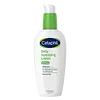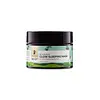What's inside
What's inside
 Key Ingredients
Key Ingredients

 Benefits
Benefits

 Concerns
Concerns

No concerns
 Ingredients Side-by-side
Ingredients Side-by-side

Water
Skin ConditioningDicaprylyl Carbonate
EmollientHydroxyethyl Urea
HumectantCyclopentasiloxane
EmollientGlycerin
HumectantGlyceryl Stearate
EmollientPEG-100 Stearate
Hydrolyzed Hyaluronic Acid
HumectantSodium Hydroxide
BufferingHomarine Hcl
Skin ConditioningSodium PCA
HumectantCetyl Alcohol
EmollientCaprylyl Glycol
EmollientPhenoxyethanol
PreservativeAcrylates/C10-30 Alkyl Acrylate Crosspolymer
Emulsion StabilisingErythritol
HumectantWater
Skin ConditioningNiacinamide
SmoothingSqualane
EmollientPropylene Glycol
HumectantPropanediol
SolventGlycerin
HumectantAlpha-Arbutin
AntioxidantCyclopentasiloxane
EmollientDimethicone
EmollientSodium Acrylates Copolymer
Lecithin
EmollientVaccinium Angustifolium Fruit Extract
Skin ProtectingCarica Papaya Fruit Extract
Skin ConditioningOlive Oil PEG-7 Esters
EmollientHeptyl Glucoside
Carbomer
Emulsion StabilisingSodium Hyaluronate
HumectantPhenoxyethanol
PreservativeEthylhexylglycerin
Skin ConditioningPanthenol
Skin ConditioningSodium Benzoate
MaskingPotassium Sorbate
PreservativeTocopheryl Acetate
AntioxidantSodium Gluconate
Skin ConditioningSodium Hydroxide
BufferingRosa Damascena Flower Oil
MaskingTurtle Oil
Skin ConditioningCitrus Aurantium Bergamia Fruit Oil
MaskingWater, Niacinamide, Squalane, Propylene Glycol, Propanediol, Glycerin, Alpha-Arbutin, Cyclopentasiloxane, Dimethicone, Sodium Acrylates Copolymer, Lecithin, Vaccinium Angustifolium Fruit Extract, Carica Papaya Fruit Extract, Olive Oil PEG-7 Esters, Heptyl Glucoside, Carbomer, Sodium Hyaluronate, Phenoxyethanol, Ethylhexylglycerin, Panthenol, Sodium Benzoate, Potassium Sorbate, Tocopheryl Acetate, Sodium Gluconate, Sodium Hydroxide, Rosa Damascena Flower Oil, Turtle Oil, Citrus Aurantium Bergamia Fruit Oil
 Reviews
Reviews

Ingredients Explained
These ingredients are found in both products.
Ingredients higher up in an ingredient list are typically present in a larger amount.
Cyclopentasiloxane, or D5, is a silicone used to improve texture of products and trap moisture.
D5 is considered lightweight and volatile. Volatile means it evaporates quickly after application. Once evaporated, D5 leaves a thin barrier that helps keep skin hydrated.
It is also an emollient. Emollients help soften the skin and prevent water loss. Silicones create a silky texture in products. D5 helps other ingredients become more spreadable.
Studies show D5 is safe to use in skincare products. We recommend speaking with a skincare professional if you have concerns.
Learn more about CyclopentasiloxaneGlycerin is already naturally found in your skin. It helps moisturize and protect your skin.
A study from 2016 found glycerin to be more effective as a humectant than AHAs and hyaluronic acid.
As a humectant, it helps the skin stay hydrated by pulling moisture to your skin. The low molecular weight of glycerin allows it to pull moisture into the deeper layers of your skin.
Hydrated skin improves your skin barrier; Your skin barrier helps protect against irritants and bacteria.
Glycerin has also been found to have antimicrobial and antiviral properties. Due to these properties, glycerin is often used in wound and burn treatments.
In cosmetics, glycerin is usually derived from plants such as soybean or palm. However, it can also be sourced from animals, such as tallow or animal fat.
This ingredient is organic, colorless, odorless, and non-toxic.
Glycerin is the name for this ingredient in American English. British English uses Glycerol/Glycerine.
Learn more about GlycerinPhenoxyethanol is a preservative that has germicide, antimicrobial, and aromatic properties. Studies show that phenoxyethanol can prevent microbial growth. By itself, it has a scent that is similar to that of a rose.
It's often used in formulations along with Caprylyl Glycol to preserve the shelf life of products.
Sodium Hydroxide is also known as lye or caustic soda. It is used to adjust the pH of products; many ingredients require a specific pH to be effective.
In small amounts, sodium hydroxide is considered safe to use. However, large amounts may cause chemical burns due to its high alkaline.
Your skin has a natural pH and acid mantle. This acid mantle helps prevent harmful bacteria from breaking through. The acid mantle also helps keep your skin hydrated.
"Alkaline" refers to a high pH level. A low pH level would be considered acidic.
Learn more about Sodium HydroxideWater. It's the most common cosmetic ingredient of all. You'll usually see it at the top of ingredient lists, meaning that it makes up the largest part of the product.
So why is it so popular? Water most often acts as a solvent - this means that it helps dissolve other ingredients into the formulation.
You'll also recognize water as that liquid we all need to stay alive. If you see this, drink a glass of water. Stay hydrated!
Learn more about Water